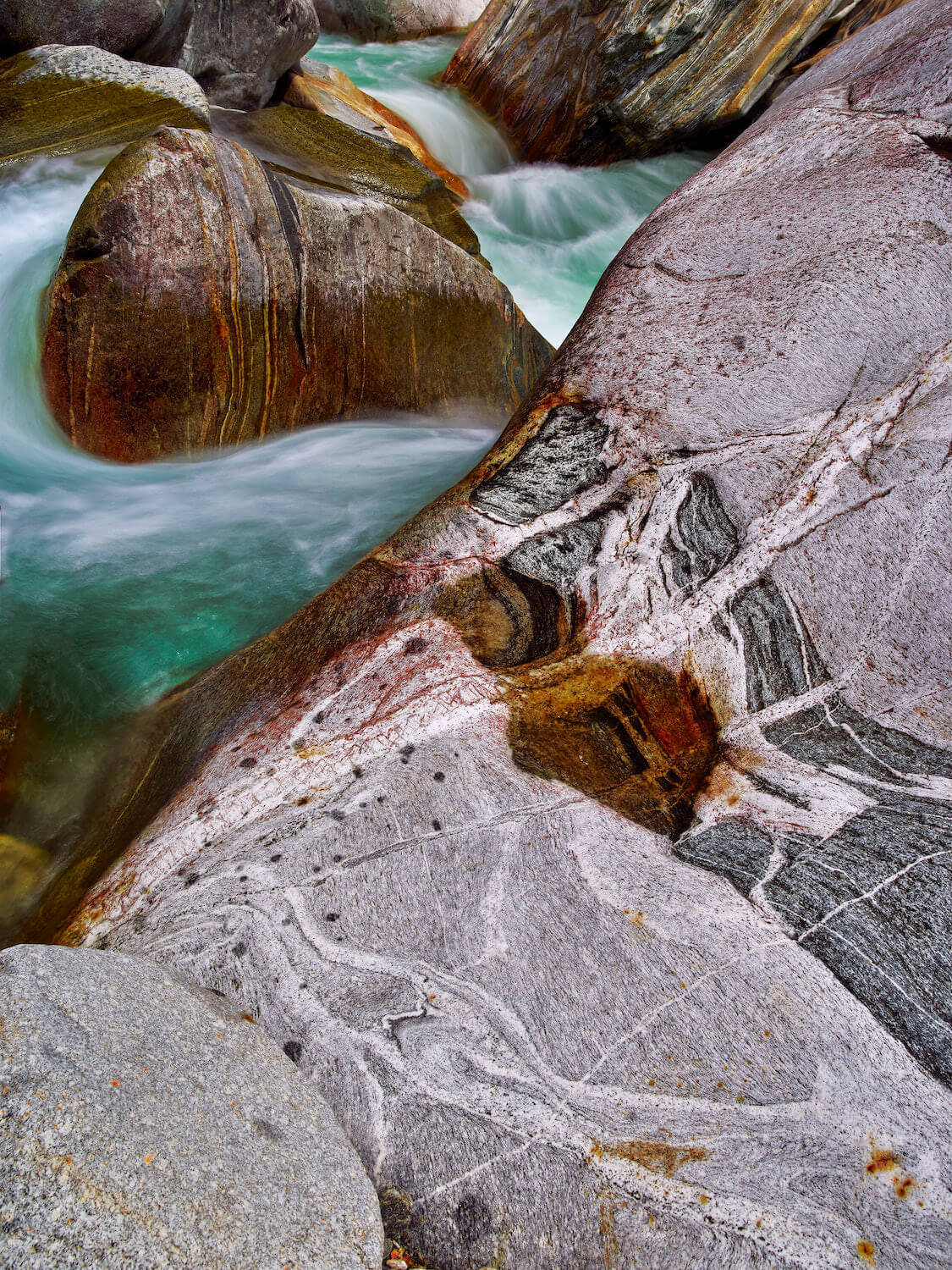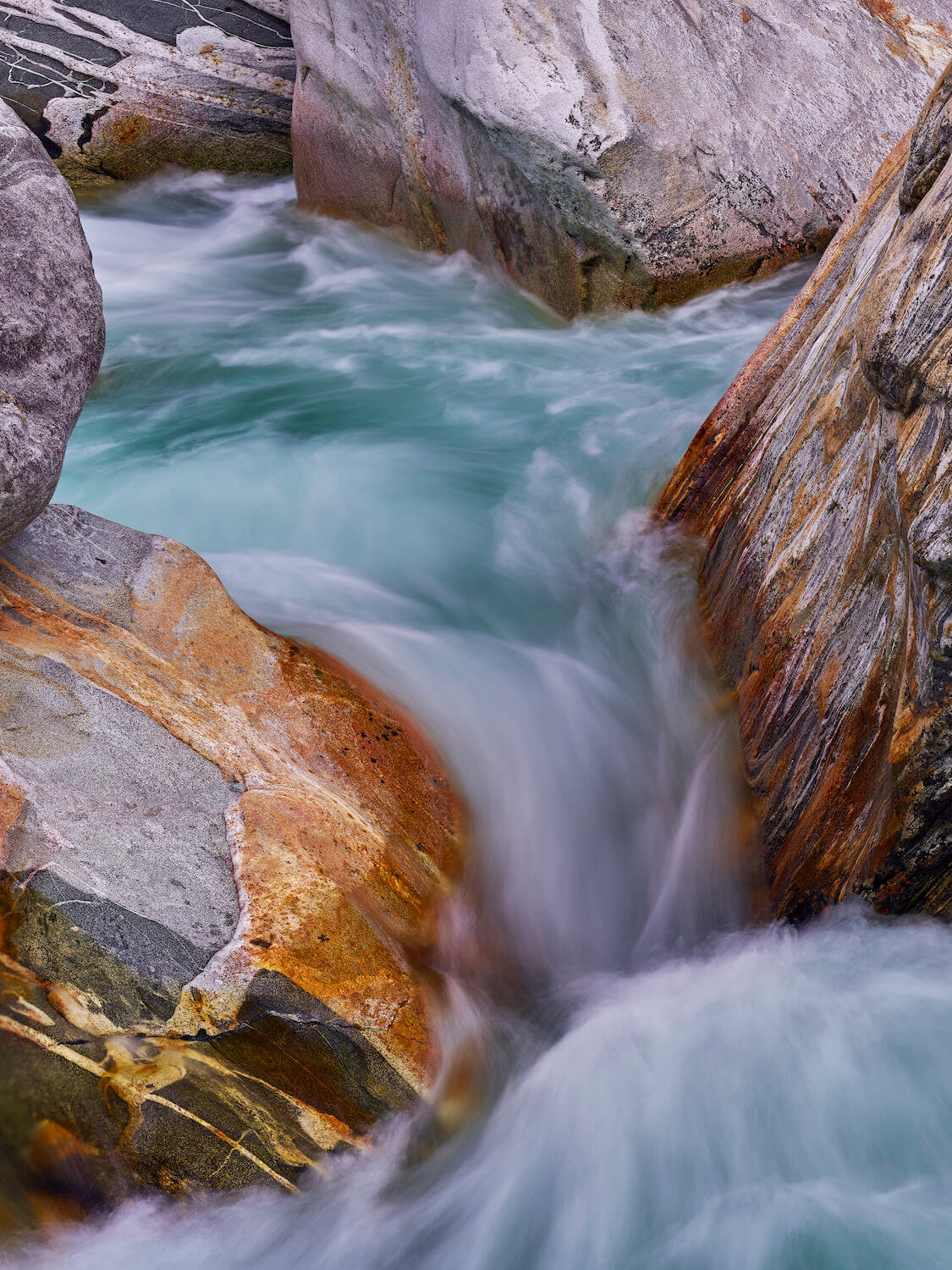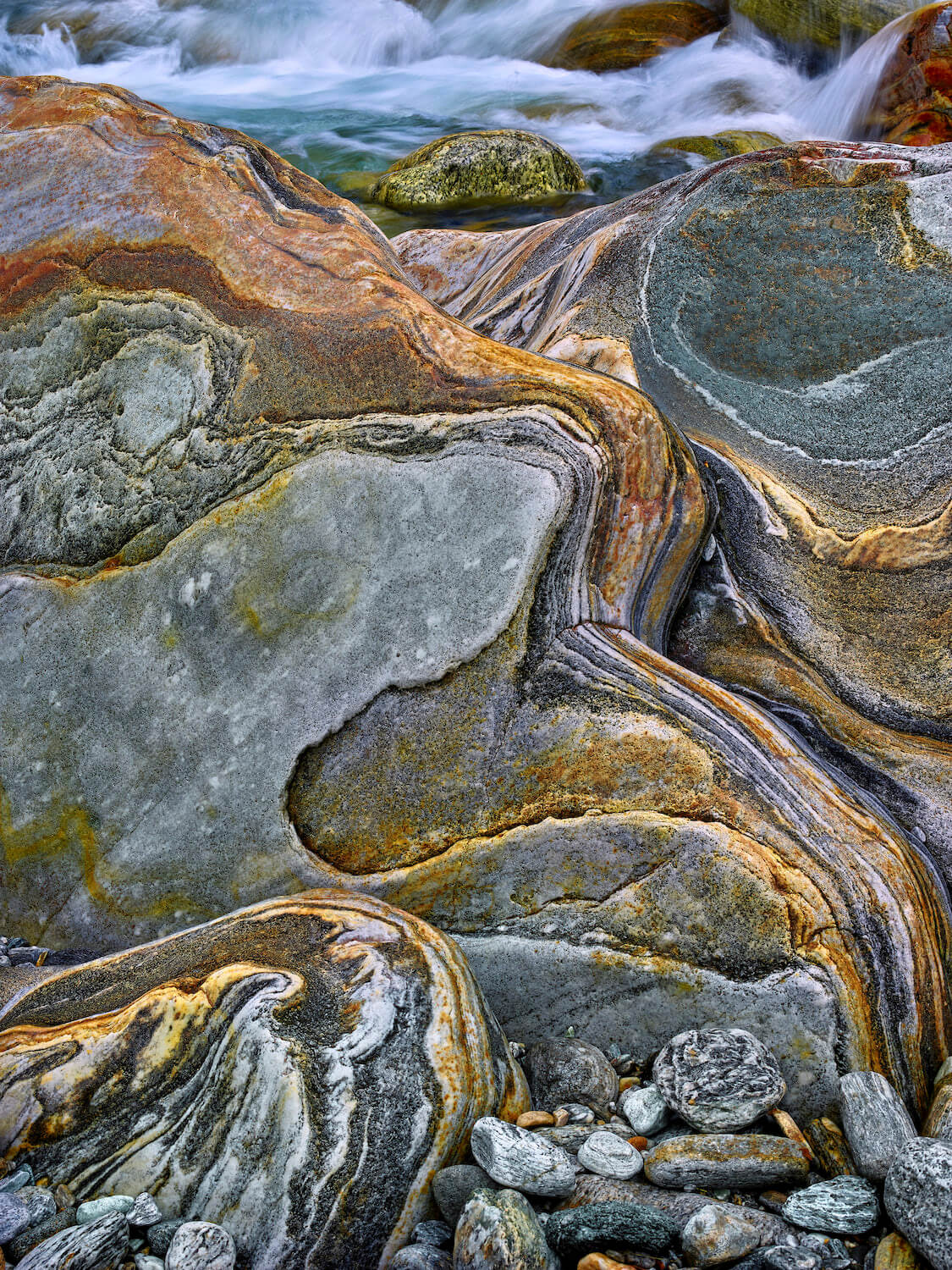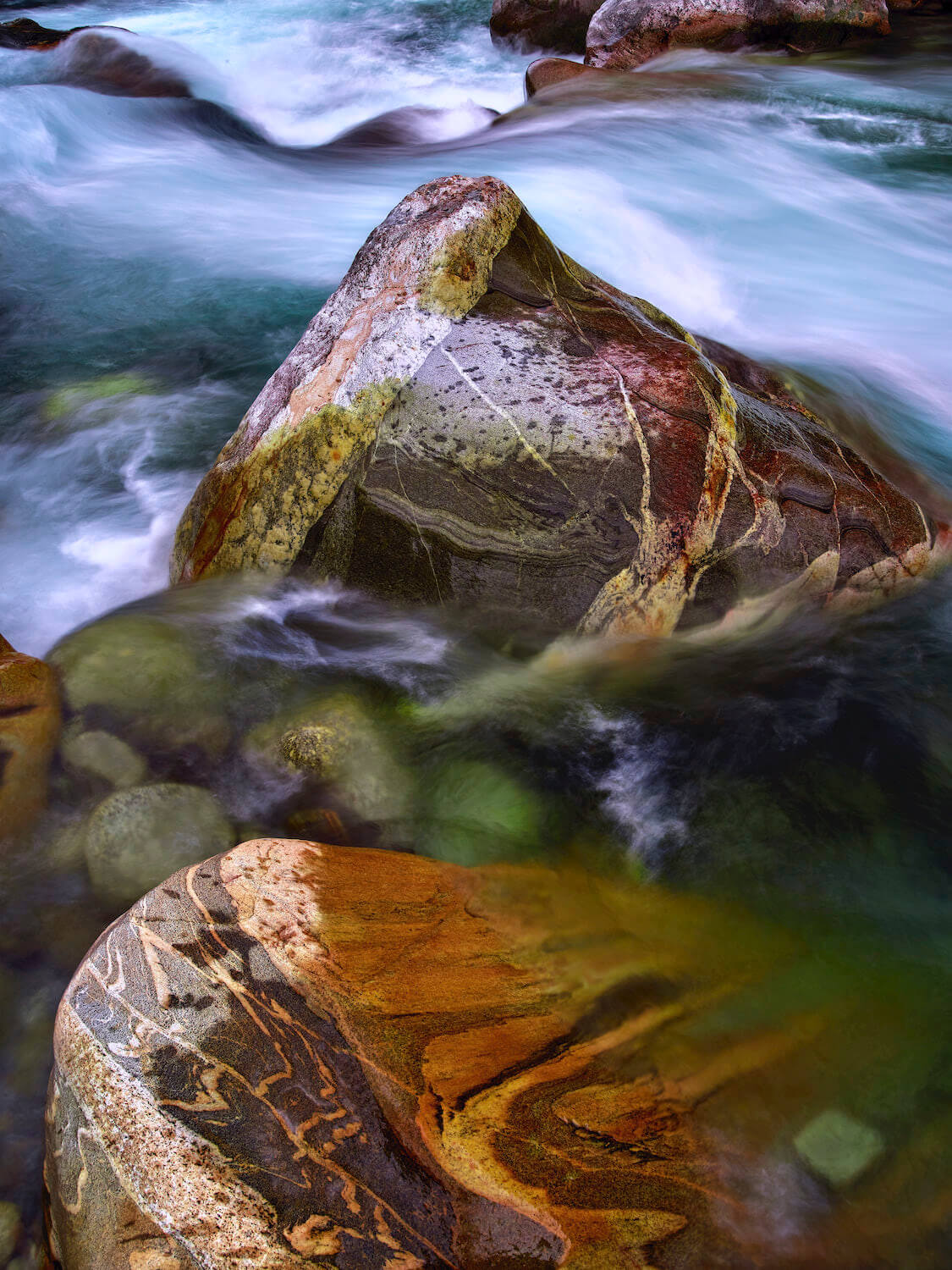In understanding better landscape photography composition, for this tutorial, I’ll be referring to some of my photographs from Valle Verzasca in Switzerland which were taken over five days in 2018. As photographers, both the choice of location and our influences at the time of fieldwork, both external and internal, determine our approach to composition. We can photograph the same place in many different ways.
For this trip I had no preconceived ideas about the kinds of photos I wanted and this is important. The only ‘baggage’ I arrived with, was to create a series that was consistent in framing and aspect ratio, built around a week’s immersive solo photography.
Moreover, I view a trip like this, not as a chance to find great stand out shots, but as an opportunity to immerse in a particular way of seeing – to provoke new responses. The one place shoot is a compositional puzzle that reveals itself each day. It’s about developing a new approach to finding forms that I haven’t noticed or processed before.
My method in the field is to look for an arrangement of elements in fairly close proximity, that connect in an interesting way. More elements mean more ticks but only if they can be controlled. It’s the building block of more intimate landscape photography. Through shifting my eye by moving around a subject I can see the possibilities opening or closing down. Being tuned in to a couple of focal lengths means I have a sense of how the connections will play out with the lens choice – not dissimilar to a golfer selecting his club. Through the viewfinder I then look to eradicate elements that don’t contribute to my image design.








